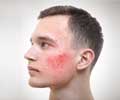Retapamulin Medication Information
Discover comprehensive details about Retapamulin, including its pronunciation, uses, dosage instructions, indications, and guidelines on how and when to take it or avoid it.
The updated prescription information covers potential side effects, precautions, warnings, and storage recommendations.
Additionally, explore the Retapamulin brands available in India and internationally, along with pricing information. For personalized advice, consult your healthcare provider.
Generic Name : Retapamulin Pronunciation : RE-te-PAM-ue-lin ICD Code : Y41.1 Therapeutic Classification : Anti- BacterialsBrand Names or Trade Names of Retapamulin
International :
Altabax
Why is Retapamulin Prescribed? (Indications)
This medication is a pleuromutilin antibiotic, prescribed for impetigo. It works by killing and stopping the growth of bacteria on the skin.When should Retapamulin not be taken? (Contraindications)
Hypersensitivity.What is the dosage of Retapamulin?
Topical- As 1% oint: A thin layer of this medication (10mg/1gm) should be applied to the affected area twice daily for 5 days.How should Retapamulin be taken?
It comes as an ointment to apply topically as directed by your physicianWhat are the warnings and precautions for Retapamulin?
•♦ Caution should be exercised in patients with history of any allergy, who are taking other medications, pediatric patients 9 months and older, during pregnancy and breastfeeding.• For external use only; avoid contact with eyes, vagina, mouth or rectum.
• Wash your hands thoroughly after applying this medication.
• Take full course of the treatment.
• Avoid long-term use of this medication.
What are the side effects of Retapamulin?
Adult-Headache, application site irritation, diarrhea, nausea, inflammation of nasopharynx and increased creatinine phosphokinase.
Child-
Application site itching, diarrhea, inflammation of nasopharynx, skin inflammation, headache and fever.
What are the other precautions for Retapamulin?
Patient may experience with irritated, red, itchy burns, swells, blisters or oozes at application site; if it so consult with your doctor.Extreme caution needed for children less than 9 months old.





